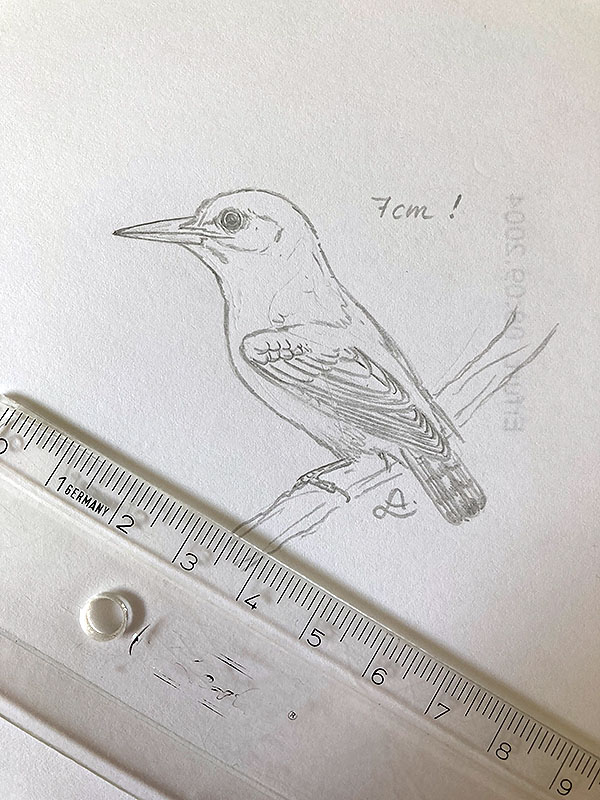
*********************
bearbeitet: 30.05.2022


*********************
bearbeitet: 30.05.2022
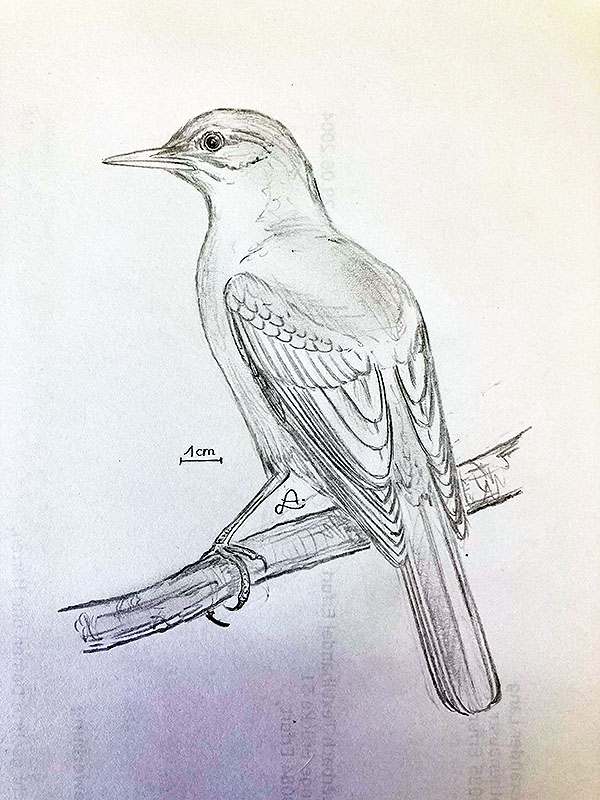
*********************
bearbeitet: 27.05.2022
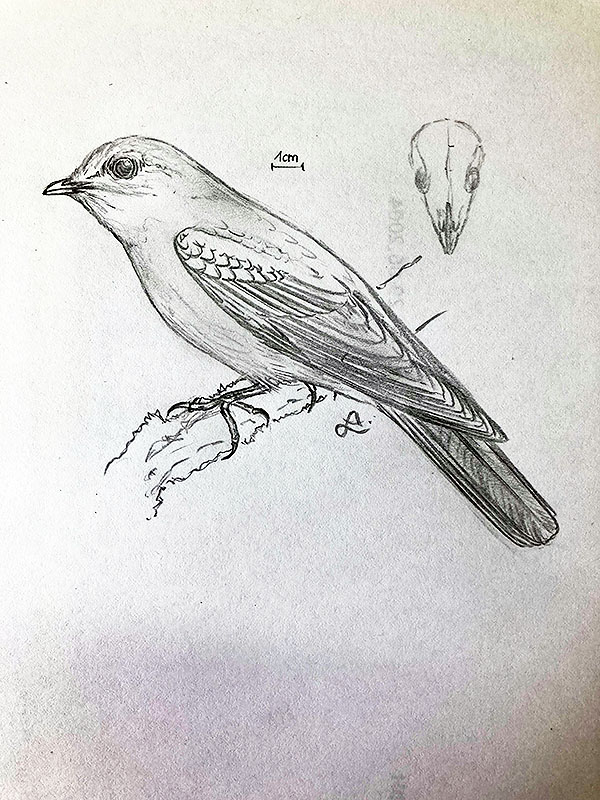
*********************
bearbeitet: 27.05.2022
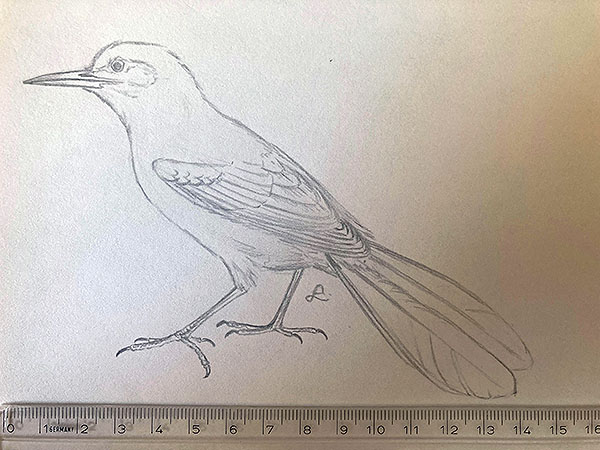
*********************
bearbeitet: 24.05.2022

*********************
bearbeitet: 21.05.2022
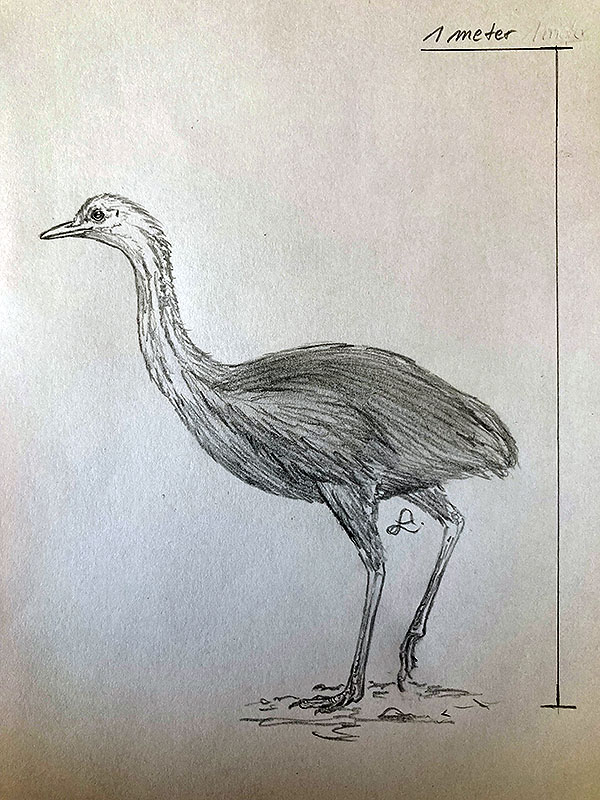
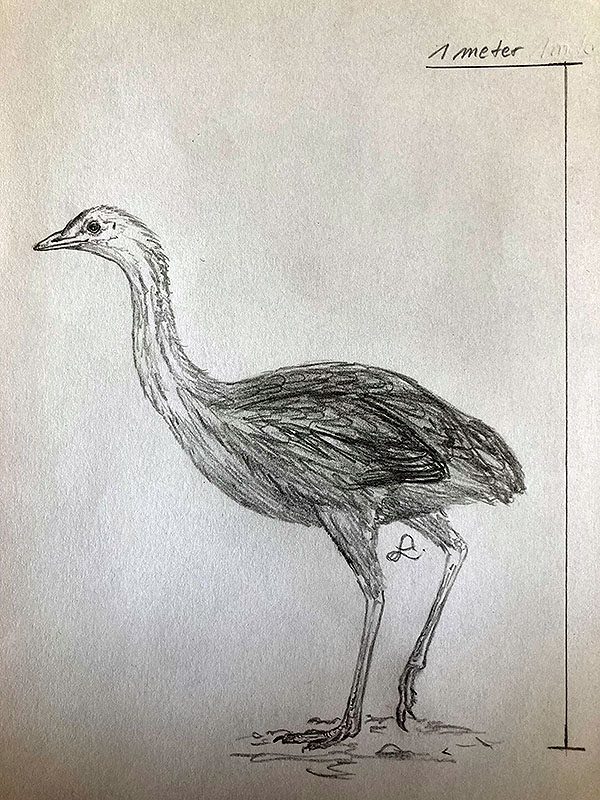
*********************
bearbeitet: 21.05.2022

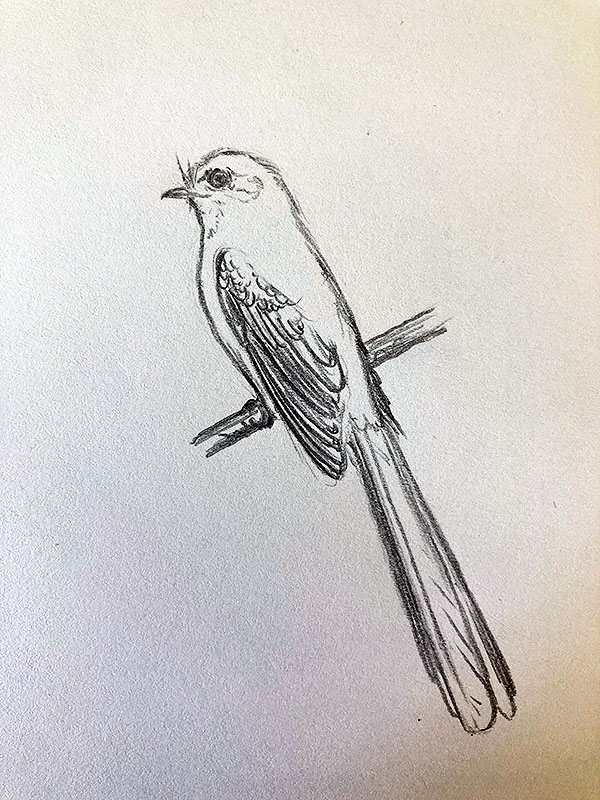
*********************
bearbeitet: 17.05.2022
ausnahmsweise mal kein Vogel …
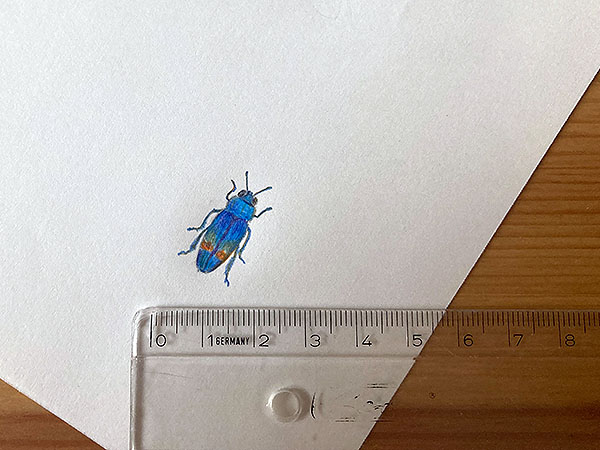
*********************
bearbeitet: 06.03.2022
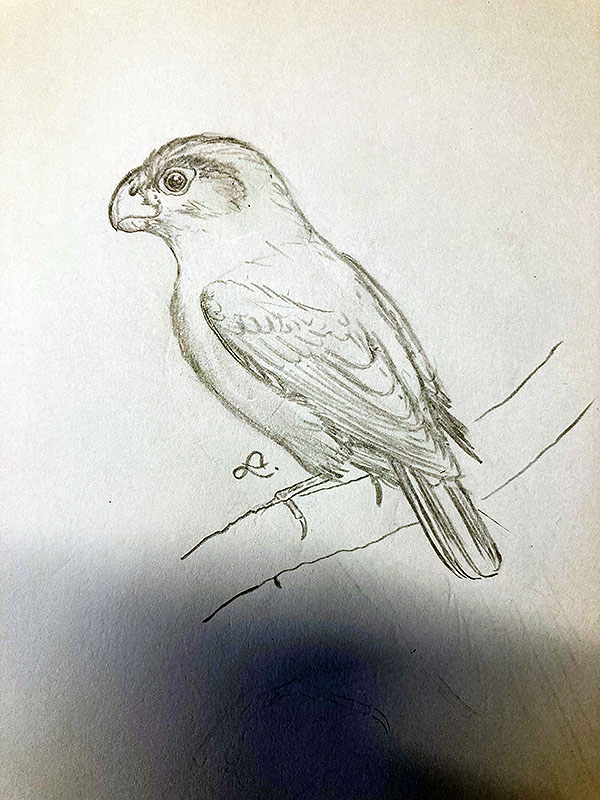
*********************
bearbeitet: 06.03.2022

*********************
bearbeitet: 06.03.2022
In his great blog (that I actually – and that’s no lie – look into at least once a week), Paul Cianfaglione writes about many bird-related things, including fine book reviews, very interesting insights into bird anatomy and everything else.
But his latest post is just unbeatable: he did make an extremely close inspection of a bird fossil from Messel that he owns.:
“Messel Bird Fossil offers unique feather preservation, and more” from January 23, 2019
***
I personally have never seen close-ups of a bird fossil that are so razor-sharp and detailed!
And his bird shows features not known in any living bird – at least not all of them together in one bird.:
The beak is very big and hooked like the beak of a bird of prey or a owl, and it appears to have had sensory pits, the body feathers appear somewhat hair-like, the wing coverts are fluffy, also probably somewhat like the feather edges of recent owls, and the primaries have extremely strange appendages not known in that way from any other bird, living or extinct, but somewhat reminding on the wings of a waxwing.
What kind of a bird was that?
Well, I could try to do a reconstruction, should I?



***
The Avian Musings blog does not longer exist, unfortunately.
*********************
edited: 03.09.2021
During the latest digging campaign in the Messel shale, a new bird fossil was found that has unimaginably well-preserved feathers – even by Messel standards, while the bones themselves are rather crumbly.
***
This bird reaches the size of a recent Great Tit (Parus major L.), it apparently had a short and broad beak and anisodactyl feet.
The feathers are exceptionally well-preserved and distinctly colored: the feathers on the head and neck are greyish brown with reddish brown tips; the rump feathers are dark ashy brown; the primary coverts of the wing are straw yellow, the primaries are reddish brown with a purplish hue; the tail feathers (at least 10) are nearly as long as the primaries, they are straw yellow and have a distinct reddish brown and dark brown stripy pattern not unlike as in recent birds of prey.
These are of course not the original colors of that bird, yet the patterns are! [1]
***
The fossil has only just been found, it hasn’t yet been prepared and has not even a collection number, thus there is not much that can be said about it, however, all in all this form reminds me on Hassiavis laticauda Mayr, a member of the family Archaeotrogonidae from the same locality, but it is of course much smaller and has proportionally less stout arm- and leg bones.
*********************
References:
[1] Georgina Jadikovskaal: Fossil of unknown bird species resembling great tit found during dig at UNESCO site. Zenger News July 12, 2021
*********************

*********************
edited: 09.08.2021
This tiny bird is thought to be the ancestor of the kingfishers or of the todies, or of both.
Quasisyndactylus longibrachis was very small, only about 10 cm long, its legs were quite long, very much like in today’s todies (Todidae) and its feet were syndactyl (that means two of the toes, toes 3 and 4, are fused together), like those of all known Coraciiformes showing that it was a member of that order.
The species is known from several specimens, some of which also still harbor their feathering, showing that this species had rather roundish wings and a rather long tail.
*********************
References:
[1] G. Mayr: „Coraciiforme“ und „piciforme“ Kleinvögel aus dem Mittel-Eozän der Grube Messel (Hessen, Deutschland). Courier Forschungsinstitut Senckenberg, Band 205. 1998
*********************
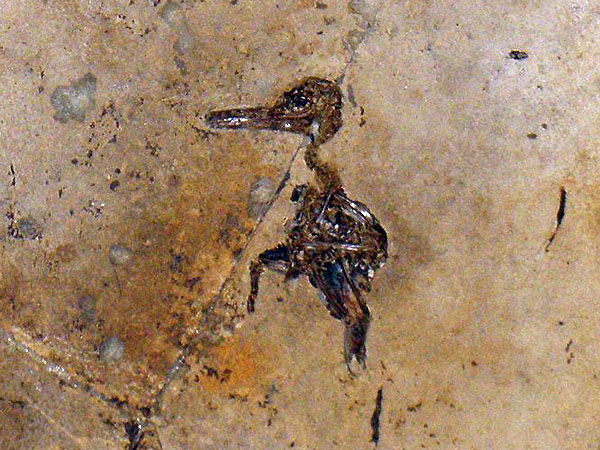
*********************

*********************
edited: 05.11.2019; 06.11.2019
This species was described in 2010, it is known from five or six specimens found in the Messel shale, five of which include cervical vertebrae which again all bear strange small tubercles unknown in any other bird dead or alive.
The bird may or may not be related to the so-called screamers (Anhimidae), it had a quite small head compared to its body and had very large and strong wing bones, thus apparently was good at flying, its feet have short toes which appear to have been somewhat flattened – and my gut feeling tells me that they may have had been webbed ….
*********************

*********************
edited: 07.08.2019
Here we have the two species of finch-like passeriform birds that had been described at the beginning of this year, Eofringillirostrum boudreauxi and Eofringillirostrum parvulum, both from the Eocene, the first from North America, the second, smaller species from Europe.
***
Eofringillirostrum boudreauxi Mayr, Ksepka & Grande
This is the larger of the two known species, reaching about 10 cm in length, it also is the older one, having lived in the Early Eocene about 52 Million years ago in what today is Wyoming, USA.
This is what I call a pre-sketch, or a working sketch, it’s just the very first step in reconstructing a fossil bird, in which this particular species is drawn in a simple side-view, usually smaller than life-size.

Eofringillirostrum parvulum Mayr, Ksepka & Grande
This bird may have reached a length of only about 9 cm, it lived in the Middle Eocene of what today is the State of Hesse in Germany.
I sketched it together with a reconstructed infructescence of Volkeria messelensis Smith, Collinson et al., a plant from the family Cyperaceae that was growing around the Messel lake, and whose seeds may indeed have been eaten by this presumably seed-eating bird.
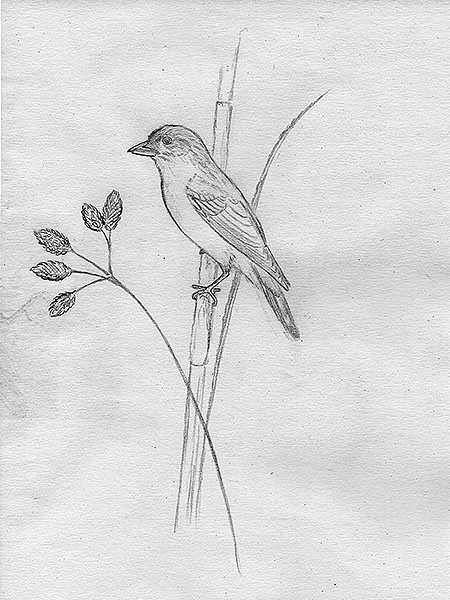
*********************
edited: 05-03.2019
… just some sketching, Hassiavis laticauda, a member of the Archaeotrogonidae, an extinct family that possibly belonged to the Caprimulgiformes or was closely related to that order.

*********************
edited: 20.02.2019
Pumiliornis means as much as “dwarf bird”, and with that, all has been said.
***
No, not so fast ….
The genus/species was described in 1999 and is, to my knowledge, so far known from three skeletal finds, of which one even contains the remains of its last meal, namely pollen.
All in all, Pumiliornis tessellatus resembled today’s sunbirds (Nectariniidae) or the sunbird-asitys (Eurylaimidae) in being very small and having an elongated beak. Its beak, however, was quite unlike those of the members of the beforementioned two families, it resembled the beak of a plover (Charadriidae), especially its narial opening (nose hole), which was rather slit-like and not round.
Pumiliornis was apparently a flower-visitor that fed on nectar and pollen (as is known from the content of the gut of one specimen), however, it may not have been specialized to that diet and may also have taken insects and other small invertebrates.

The bird was small, very small, in my reconstruction it reaches a length of only 7,5 cm, this size, however, is of course depending on the length of its tail feathers, which unfortunately are not preserved in any of the known specimens. I’ve reconstructed the bird with a rather short tail, which may some day turn out to be completely wrong, who knows.
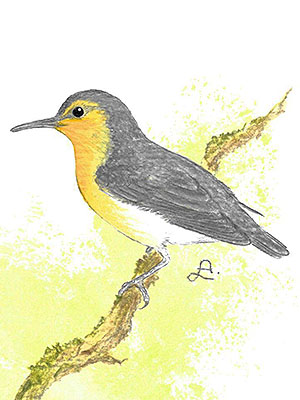
The feet corresponded to the typical scheme of recent passerine birds, i.e. they have three toes pointed forward and one towards the back. However, the feet appear to have been facultative or semi-zygodactyl, which in turn means, in simple terms, the first toe usually pointed forwards, but could be held backward when needed.
***
The genus/species originally could not be assigned to any living bird family, not even an order, but is now known to belong to the extended Passeriformes-orbit, which in addition to the passerine birds also includes the falcons (Falconiformes) and the parrots (Psittaciformes). It is now known to have been a member of the extinct family Psittacopedidae Morsoravidae, that apparently also contains other unusual genera like Morsoravis, Psittacopes and the recently described, very interesting Eofringillirostrum and probably others too.
***
Finally, it should be mentioned that this bird was not a dwarf spoonbill, as claimed by a certain person. 😉
*********************
References:
[1] Gerald Mayr: Pumiliornis tessellatus n. gen. n. sp., a new enigmatic bird from the Middle Eocene of Grube Messel (Hessen, Germany). Courier Forschungsinstitut Senckenberg. 216: 75-83. 1999
[2] Daniel T. Ksepka; Lance Grande; Gerald Mayr: Oldest finch-beaked birds reveal parallel ecological radiations in the earliest evolution of Passerines. Current Biology 29: 1-7. 2019
*********************
edited: 08.02.2019

When this tiny creature was first described it was thought to represent some parent form of the parrot order, however, it later [1] was reinvestigated and is now placed near the Passeriformes … near them, not among or in between them!
My reconstruction is life sized, the bird here is nearly 12 cm long, the feathers, however, are not known, so are completely speculative!
*********************
References:
[1] Gerald Mayr: A reassessment of Eocene parrotlike fossils indicates a previously undetected radiation of zygodactyl stem group representatives of passerines (Passeriformes). Zoologica Scripta 44(6): 587–602. 2015
*********************
edited: 17.09.2018